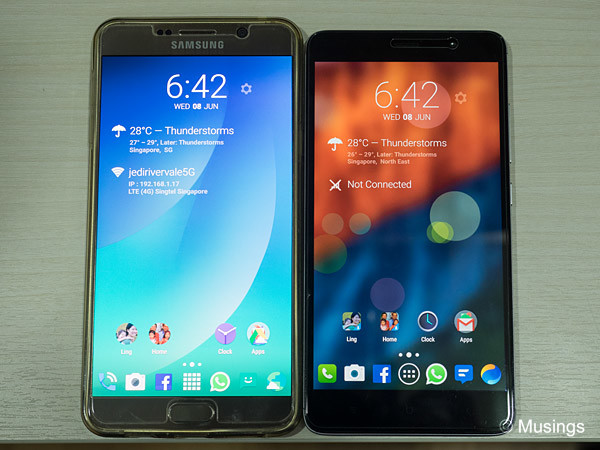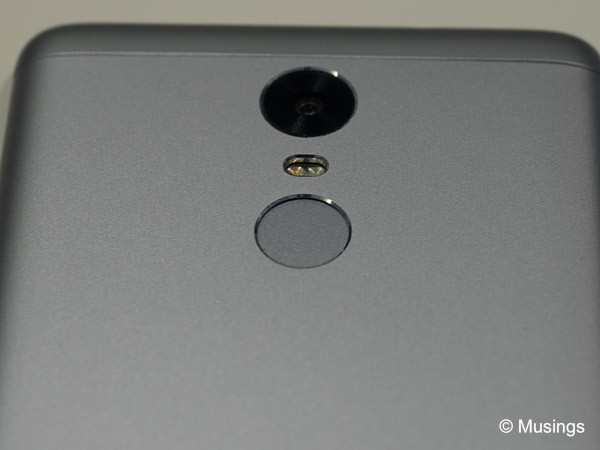I remembered that there was widespread sentiment a decade ago when Made in China products started appearing everywhere, and much of that first reaction was anything but positive. Products labeled ‘MIC’ were scoffed at with derision.
The more forward thinkers back then were more circumspect though. Some were resigned to that China – for many reasons that include economic muscle and manpower costs but which details are well beyond what I’d care to cover here – would eventually emerged becoming the world’s factory for just about everything, while others pointed out that the often reported shoddy quality of MIC products were a result of poor quality control at a specific company or factory rather than an inherent problem with that country’s production capabilities. Either way, what some tech companies didn’t realize as well then are the long-term impacts of relocating too much of their manufacturing of key strategic technological products to China and are now only slowly realizing the dangers, as articulated in this PC Magazine article (well worth a read for those who carry or worry about geopolitics).
In any case, despite the amount of broken and badly manufactured MIC swill I’ve bought, I remained in total agreement with the second of the two camps above – that whether an MIC product is of any good really comes down to that specific company’s care for QC. And I’m not about to put down an entire country’s production, though Ling will readily disagree with that when it comes to fresh produce!
One Chinese company’s products that I’ve become intrigued with is Xiaomi, the fairly new Chinese company that has become one of consumer electronics biggest disruptors – in that they are not first and foremost technological innovators, but instead are regarded as one of the best companies for taking existing technological innovations and making their versions as good and selling them at price points a fraction of their competitors’. I’ve owned several items in their product categories now: headphones, powerbanks and most recently a couple of smartphones – and they have all turned out to be exemplary devices, and whatever niggling annoyances easily looked over by their sheer advantage of costs. I might blog about the Mi Headphones (we’ve got two of them) or powerbanks (have two of them too) at some point. But for this post, it’s about the Mi Note 3.
Truth to tell, I was quite half-half about trying out the Mi Note 3. I already have a superbly performing Samsung Galaxy Note 5 that still looks and feels as premium today as it did 9 months ago. I was however figuring out a way for the number of devices we were bringing to Melbourne to use local mobile data but without buying too many local data sim cards (affordable as they are), and one solution was to get a mobile phone with a dual-sim card, an capability that is, interestingly, still missing from Samsung’s top line Galaxy phones – including the Note 5. I did briefly consider the budget range of Asus Zenfones, but they were simply not as nicely made as the Xiaomi’s, and most importantly – the couple of models I checked out all had displays which were too cool in tone for my liking.
Mi phones are available here either directly through their web site, or through resellers. And they are also one of those weird phone manufacturers where their phones are cheaper on their web site than through resellers – and largely because their most popular phones are typically available through flash sales that are pre-announced (to build up hype?!), and get sold out so fast that resellers will jack up their own prices for those enthusiasts who couldn’t get one through the Xiaomi web site. The Mi Note 3 has been out of stock for several weeks now. So, when the next flash sale was announced for last Tuesday at noon, I actually set aside a calendar event reminding me specifically to book one in. And gone in a flash it again was – the Mi Note 3 was out of stock again at their online store in mere hours.
My unit dutifully arrived two days later, shipped without additional cost and it was available for self-pickup at SingPost’s POPStation. Another one of those nice perks ordering from the Xiaomi store.
And so, my brief notes on the Mi Note 3, and also in specific comparison to the Samsung Note 5.
The Mi’s has a metallic body that is painted matte and slightly slippery, though not nearly as much as the Samsung’s bar of soap feel. It’s at least resistance to fingerprints, unlike the Samsung which practically requires a case unless you don’t mind that shiny phone becoming coated with prints in mere minutes.

The Mi’s screen has good viewing angles, and isn’t as obviously saturated as the Samsung’s. There are also two other color balance settings you can toggle around with, none of which makes the phone look better IMO from the default setting. The more serious issue with the Mi though is its limited maximum brightness. Indoor usage is fine, but this phone’s display is simply not bright enough for sunny outdoor use.
The Mi’s screen is reportedly not protected by Gorilla Glass – and that has been included by several reviewers as a disadvantage. However, there’s an interesting YouTube video making its rounds showing how tough (whatever it) is the Mi Note’s display, and it’s reassuring.
The thing has a large 4000mAh battery, compared to Samsung’s 3000mAh battery. Oddly though, it’s actual reported use time is somewhat shorter on some review sites. I haven’t put the phone through long periods of use, but the Mi does seem to mildly sip battery power at least, so having it last 2 days on normal use seems to be easily possible.
Plug-in audio output on the Mi is noticeably louder than the Samsung – important for those of us who listen to music in noisy environments – and clarity in the lower frequencies in music playback is better too.
The thumbprint scanner on the Samsung is somewhat fast and so-so in accuracy, as in it sometimes takes a couple of tries for my thumbprint to register. The Mi’s on the other hand is blazing fast and unfailingly accurate. For added effect, its thumbprint unlock works even when the phone is in standby mode. That’s missing on the Samsung, which means unlocking the phone is a two-step process.

If there is one common feature between the two phones where the Mi is at a significant disadvantage, it’s the camera. Pictures are bland and Full HD video quality is awful looking when compared to the Samsung.
As our Ang Mo bud recently remarked too, the Mi doesn’t seem to support all the 4G bands that are used in the US. So, as effective as the phone might be here in Singapore, it might not be as much over there. I had no problems accessing Google services and the usual suite of products on the local version of the device thankfully, though users of the grey import versions of Xiaomi phones have to jump through all sorts of hoops to get them to work.
Summarily – the Mi costs $299 compared to Samsung Note 5’s $848. That’s almost three times as much – and whatever the Note 5 is better in (e.g. overall performance, the stylus, camera, better screen, VR possibilities) isn’t in that multiple even then. For those of us who don’t care about branding or need the higher-tier features from Samsung, LG or Sony – the Mi phones seem pretty much like the real deal. Good stuff!
Recent comments